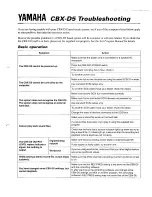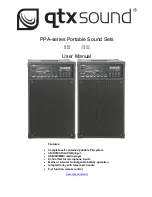
response, and some microphone positions will
obscure problems instead of showing them.
> The audible effect of response problems is a product
of both the magnitude of the error and its width. A
9-dB “hole” one/third octave wide is less audible than
a 2-dB “dip” two octaves wide. Try for an average
response equally above and below the desired
response over each octave span.
> The human ear averages the overall sound-field
response by complex physiological and psychologi-
cal processing. A single microphone only hears at
one point, which must be selected to represent as
closely as possible the overall sound field. Since
tonal perception is most influenced by the nearest
source, we usually equalized each side separately.
The mike is set up at the driver’s listening location,
facing forward, and the left channel is equalized
Then the mike is set up at the passenger’s location
and the right channel is set up to match the left. This
procedure usually gives good results
EQUALIZATION GOALS
The primary goal of the MAQ-104 is to produce a smooth
response approaching a desired curve, eliminating or
reducing peaks and valleys in our system response
A system can be equalized for a flat response but in most
cases this is a dry and flat response. The best equalization
is the one that fits your style of music For example: a curve
with the bass boosted would be more realistic to a Rock
and Roll type of person, where a partial boost in this section
would be more natural to Symphonic Music
Figures 2-5 show some typical “good-sounding” system
response curves. Curve “2” is a good general-purpose
goal. Curve “4” with increased bass will give more impact
on Rock-and-Roll, while “3” would sound more natural for
Symphonic Music. Curve ”5" illustrates reduced roll-off rate
in the mids and highs. These curves are only examples,
and the best curve is the one that suits your listening style







































